Entire generations of Pokémon history often feel defined by a single game. As wide-ranging as this franchise is—games, anime, trading cards, lifestyle merchandise—Game Freak’s video games provide the single creative wellspring from which everything else springs forth. As such, games like Scarlet and Violet often dominate how we look back on different generations of Pokémon as a whole, for better or worse. Now, a year after its rocky launch, what will Scarlet and Violet’s legacy be in the Pokémon series’ history? It’s sad to say, but there probably hasn’t been a game that has so embodied both the series’ stunning ambition and the hurdles that it has yet to overcome.
The realisation of a childhood dream
Scarlet and Violet were the first truly open-world Pokémon game. Yes, Legends: Arceus has open environments to explore, but Scarlet and Violet’s Paldea region is a continuous world you can explore without a loading screen. Make no mistake, you’ll see some of that loading happening in real-time off in the distance as you fly, swim, and climb, but it is a mostly seamless experience unlike anything Pokémon has ever pulled off. There’s something kind of magical about flying around a Pokémon world, seeing different critters running around, and jumping right into battling and capturing them without any of the menus and obstacles that wasted your time in previous games.
Part of that magic comes from experiencing Paldea’s open world with friends. Playing with up to three friends, running around a Pokémon world without interruption, battling, trading, exploring together, is the actualization of a childhood dream.
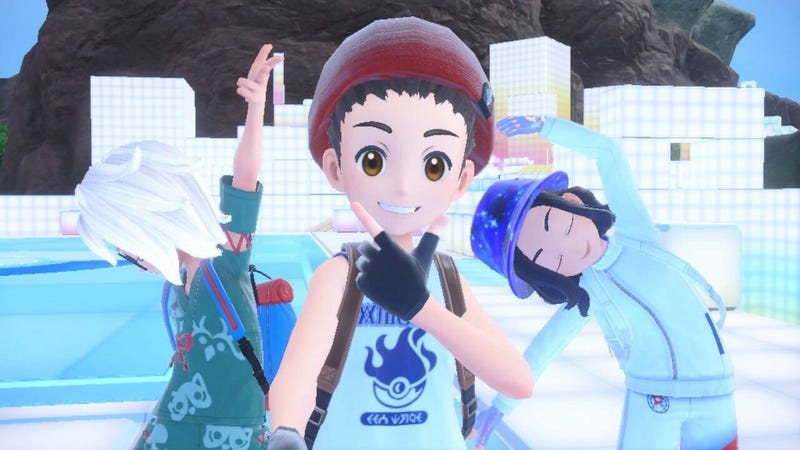
Some of my favourite video game memories over the past year came from getting together with friends or my brother to experience some amalgamation of the Pokémon journey I always dreamt of alongside those closest to me. My Switch’s screenshot folder is full of selfies and impromptu photoshoots of my friends exploring Paldea, capturing Pokémon and discovering all its secrets together.
Expansive video games like Scarlet and Violet are an inherently communal experience. We gather on voice calls and social media to tell each other about everything we find and see. Scarlet and Violet are the most community-oriented a Pokémon game has felt since Pokémon Go. Now, we don’t have to just tell each other about our experiences and discoveries, we can find them together in the same open world. Pokémon has always asserted that the journey is best when taken together, and Scarlet and Violet have established that it can and should be a virtue expressed in the games beyond just training and battling.
Scarlet and Violet keep players coming back
Sword and Shield and Pokémon Go made raids a standard element of the series, and Scarlet and Violet’s “Terastal” twist on the format created events that have stuck with fans long after they’ve concluded. We overcame some of the most difficult challenges Game Freak has thrown at us, and it really underlines how deep Pokémon’s combat can be, even outside of the competitive environment. Each Pokémon game only has so long in the spotlight before the next one usurps it, and Scarlet and Violet have made the most of their time with frequent events, challenges, and rewards to keep players coming back.
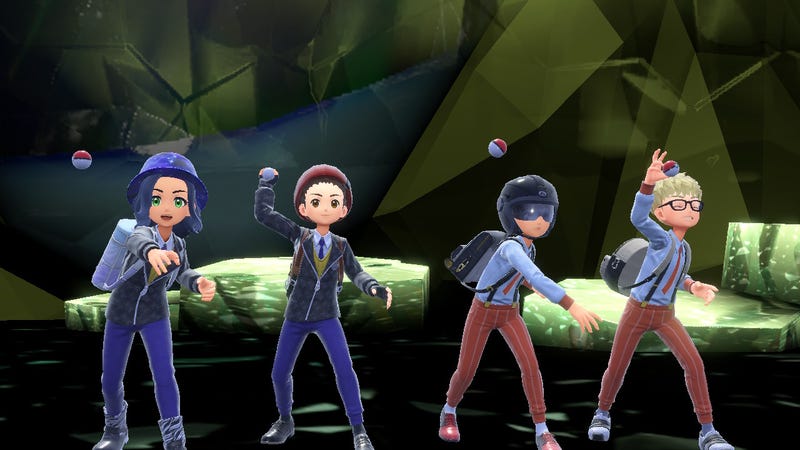
The narrative potential
While Scarlet and Violet showed a desire to grow from a design standpoint, one of its biggest swings is in the narrative department. Yeah, it’s still got the standard “get eight gym badges and become the League Champion” story, but it also has diverging paths you can take at your own pace. The “evil team” plotline with Team Star, instead of focusing on the schemes of a criminal organization, explores childhood bullying with a surprising amount of nuance and empathy (which debatably can’t be said for The Hidden Treasure of Area Zero DLC) and is a welcome change from the crooked villains we’re used to in Pokémon.
But the most memorable storylines came from Arven and the region’s Professor. What starts as a clear case of child neglect on the part of Paldea’s esteemed professor (Sada in Scarlet, Turo in Violet) turns into one of the most fascinating, subversive finales Pokémon has ever put forth. Scarlet and Violet go into a full Yoko Taro-style escalation, revealing the Professor has long since passed and has been replaced by an AI recreation of their memories. It not only cleverly ties into the themes of finding one’s own bliss in an open-world Pokémon game but reminds us that this world is always bigger than it felt to us as children. Scarlet and Violet’s ending feels like a fulcrum point for the series to continue telling darker stories instead of burying those truths in subtext and Pokédex entries.

The problem with Scarlet and Violet is you can’t compliment them without also adding an asterisk to the statement. That’s what makes looking back at the game and breaking down its likely legacy such a confounding, frustrating exercise. Consider…
After a year of updates, Scarlet and Violet are still a technical mess
There’s an argument to be made that Pokémon RPGs haven’t looked good since they made the transition to 3D, but Scarlet and Violet open world looks, at best, like an ugly GameCube game. Textures are flat to non-existent, animations are stiff, and it’s not until you get to one of the well-produced cutscenes that you get a sense of what a better-looking game could have captured. The lack of visual polish feels like an extension of the game’s overall lack of technical polish. After a year of patches, Scarlet and Violet still run pretty terribly, and even feel worse in the DLC for some players.
Scarlet and Violet’s technical problems have spanned pretty much every issue you can imagine in an open-world game. Texture pop-in, cratering framerate drops, entire objects, characters and Pokémon disappearing, glitchy animations, erratic camera angles, and inconsistent lighting, to name just a few. Technical problems were so pervasive that Nintendo had to apologize in patch notes and claimed efforts were being made to improve the games. And yet, as I wrote in my review for the Teal Mask DLC, the game is still running at what feels like single-digit framerates after 13 months’ worth of fixes.
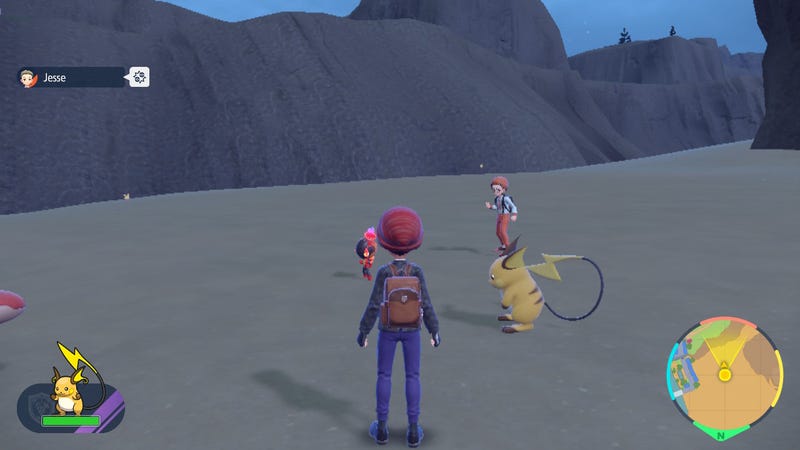
Scarlet and Violet already showed major signs of technical stress, and the bulging seams are even more apparent in The Teal Mask. As much as I enjoyed this DLC, it remains disappointing that some of Pokémon’s best stuff is being dragged down by a game engine that feels like it’s just a slight breeze away from falling apart.
The kneejerk reaction is to blame the Switch’s hardware, but games like The Legend of Zelda: Tears of the Kingdom prove that the handheld/console hybrid is more than capable of running an open-world game of even larger scale. Sure, that game has its chugs, but never approaching Scarlet and Violet’s levels.
A step back in the open-world format
Scarlet and Violet are two steps forward and one step back for Pokémon’s open-world evolution. While the seamless world and multiplayer are great in the face of Pokémon Legends: Arceus’ solitary, sequestered maps, dialing back from its predecessor’s action-oriented spin on the series is one of its most notable downgrades. In fairness, Legends: Arceus launched the same year as Scarlet and Violet, and overlapping development cycles mean not every idea from one game would appear in the other. But that proximity makes those comparisons more stark.
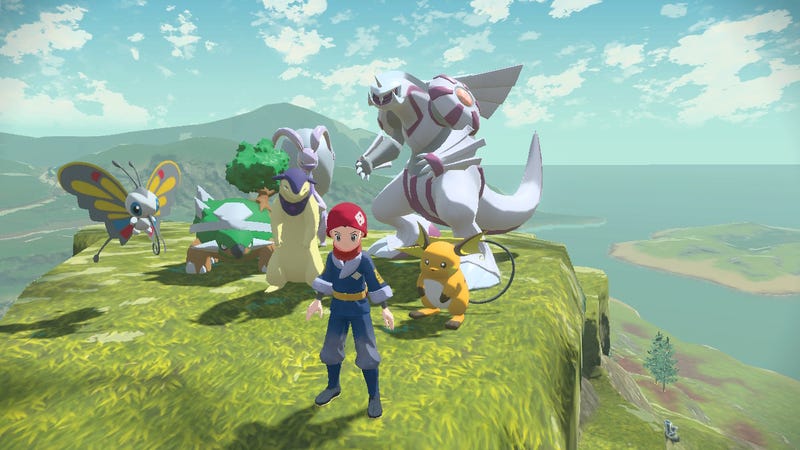
In Legends: Arceus, 10 months prior to Scarlet and Violet, we were sneaking, jumping, traversing the Hisui region, and even capturing Pokémon in real-time, like in an action game. Sure, the action wasn’t genre-defining, but it was surprisingly smooth, exciting, and felt effortless to move through. Meanwhile, Scarlet and Violet’s technical troubles make their movement feel rigid and capture mechanics less precise; overall it feels less freeing to exist in its world.
I would love to see the next Pokémon game take Legends: Arceus’ movement and control and marry it with Scarlet and Violet’s seamless open-world design, because right now it feels like both games are two halves of a complete idea.
What did the DLC do for Scarlet and Violet?
The Hidden Treasure of Area Zero expansion came in two parts: The Teal Mask and The Indigo Disk. One is a prologue that feels smaller in scope, whereas the second feels more substantial and is basically a toolkit for developing competitive teams with a good (not great) conclusion to the overarching story. Both have their strengths and pain points, embodying the best and worst parts of Scarlet and Violet. They’re buggy, they’re heartfelt, they’re socially-driven, they’re ugly as sin. Every cute new idea they add is undermined by an engine that can’t maintain a stable framerate when you rotate the camera. The DLCs are expansions in the purest sense in that they are a continuation of the exact same game Game Freak has failed to build a proper foundation under.
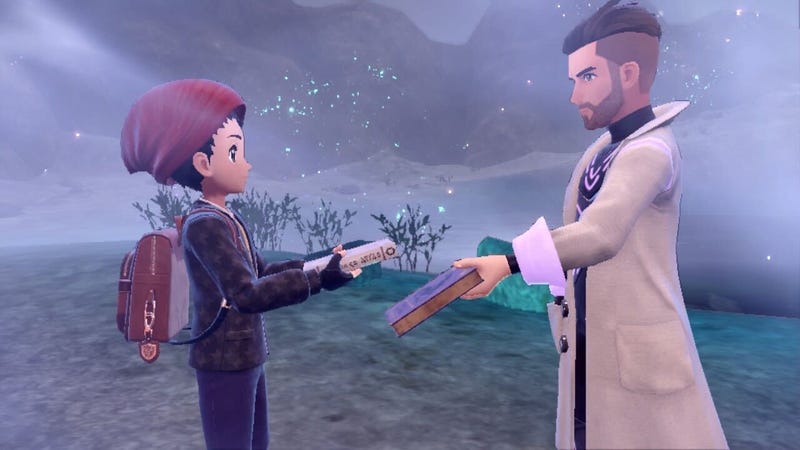
But it sold anyway
Scarlet and Violet are shining examples of something Pokémon is reckoning with. It has a charm that draws people in, but most franchises of this scale would be rightfully raked through the coals for delivering something this subpar. And yet, these games sold more than 23 million copies, making them collectively one of the highest-selling games on the Switch, and the third-best-selling games in the series behind Sword and Shield and the original Red and Blue. This is happening everywhere in Pokémon right now; witness public clusterfucks like the scalping issues The Pokémon Company doesn’t create supply to account for and how Pokémon Go changes disproportionately affect disabled and rural players. What motivation is there to improve if people continue to pay large sums of money for things that would rightfully lead to most companies and franchises losing public trust?
To that end, Scarlet and Violet is an honest representation of the state of Pokémon in its ninth generation. It has plenty of wonderful ideas it can’t capitalize on and knows precisely which heartstrings to tug to turn on the money machine. As many cherished memories as I have of these games, we are all just as trapped in this loop as a Pokémon is in a Poké Ball. It’s just a matter of how long the community is willing to put up with being crammed inside the machine.
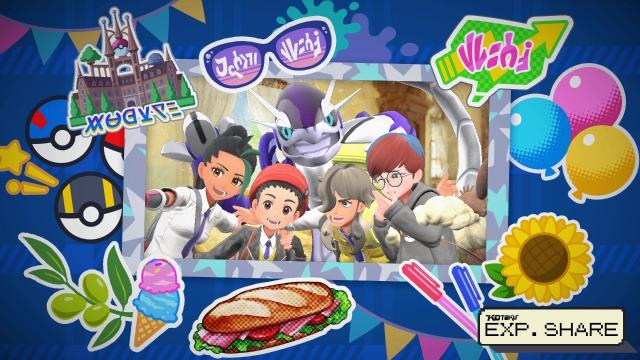
Leave a Reply